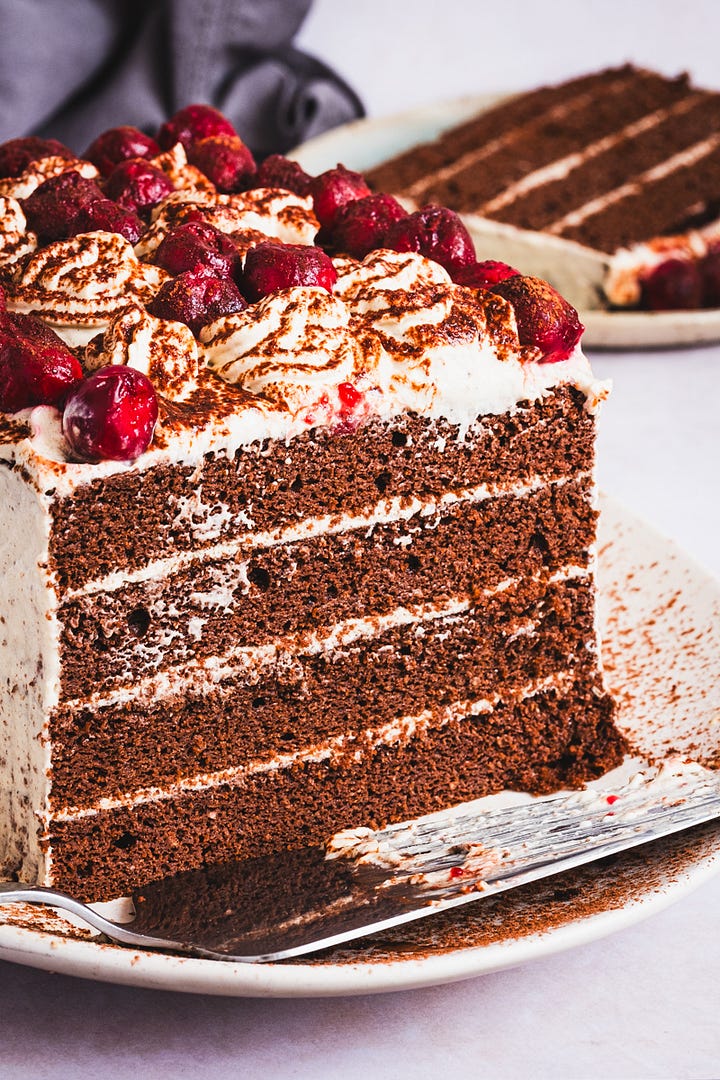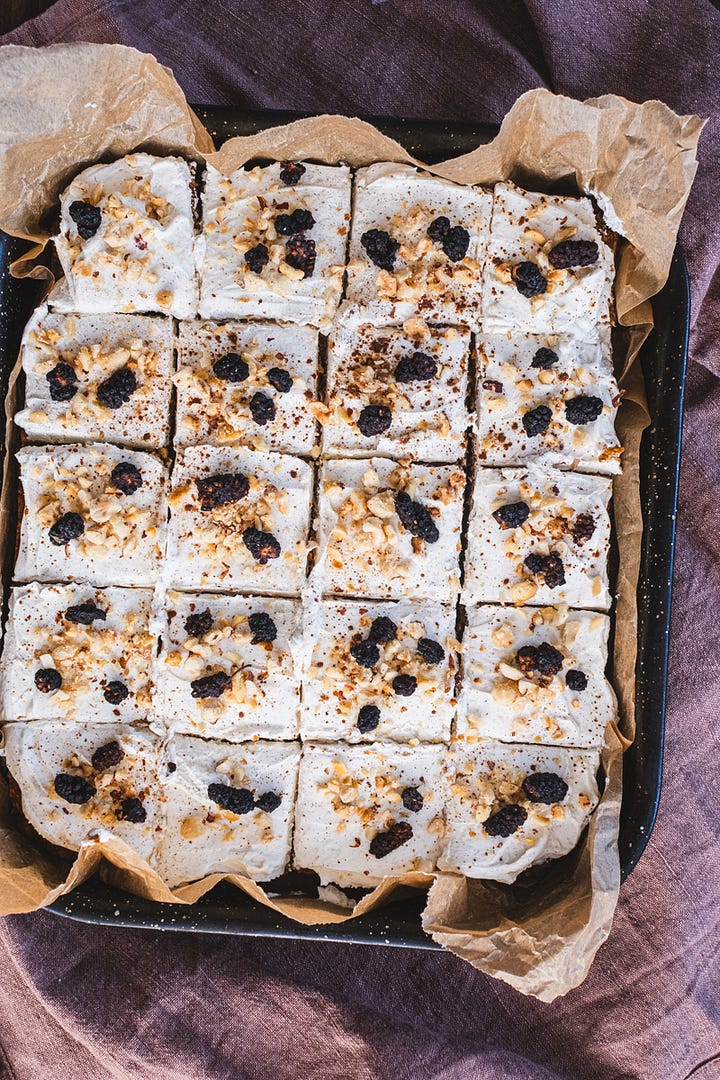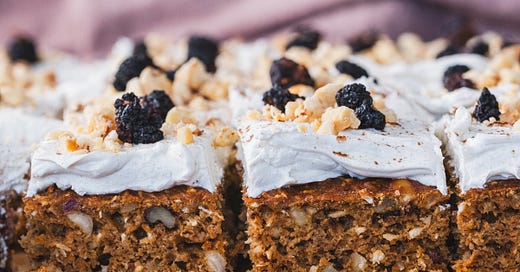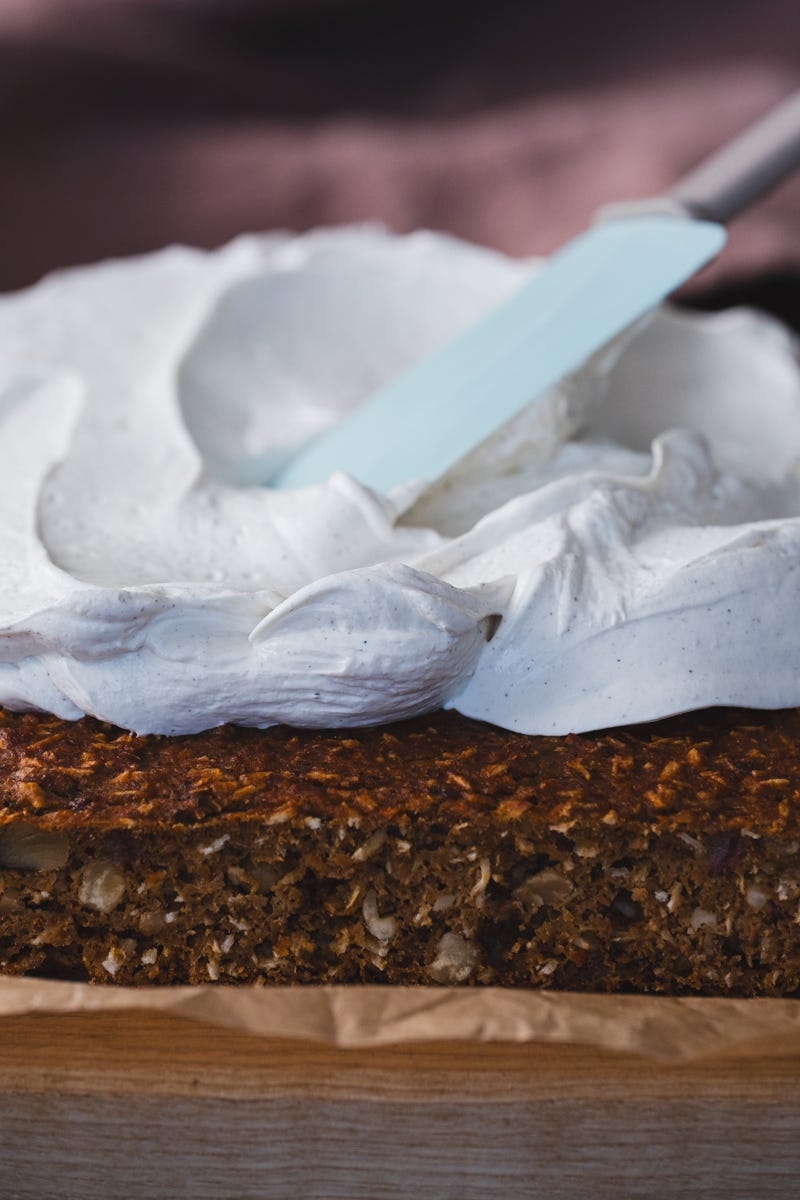This might just be the easiest recipe I’ve ever shared. And yet, it’s one of my favorites—simple, luscious, and so versatile.
Every time I post a photo of one of my layer cakes, the same question rolls in: “What frosting do you use?” When I reply with the four ingredients I use, the next message is always: “Do you have a recipe?”
To be honest, I never thought to write it down on its own. It felt too simple. I assumed everyone would instinctively know how to mix mascarpone and sour cream into a silky frosting. But over time, I’ve realized that sometimes the simplest recipes are the ones most worth sharing.
While versions of this frosting have appeared in a few of my cake recipes—both on my website and in my cookbooks—I’ve never given it the spotlight it deserves. And since it pairs especially well with carrot cake, which feels like the star of springtime baking, I decided it was time to give this little gem its own place. For now, here on Substack.
This frosting also pairs perfectly with my Gluten-Free Sheet Cake, for your layer cake creations.
Tomorrow, a dear friend is arriving from Denmark for a short visit. I wanted to make a little treat we could enjoy with coffee, so yesterday I baked a carrot cake. Today, I made the frosting—and as I worked, I felt inspired to take some photos and share the process with you.
You might ask me about the carrot cake recipe, but this one was a true “clean out the fridge and pantry” moment. I just used what I had on hand, topped it with the frosting, toasted hazelnuts, and dry mulberries.
That said, I do have a few carrot cake recipes on my blog and in my cookbooks if you're looking for something tried and true.
Now, about this frosting…
A Love Letter to Mascarpone
My love for mascarpone goes way back. I used to make the most divine tiramisu—the real deal, just like in Italy. If you’re following the Plant Paradox lifestyle or are sensitive to casein, look for an authentic Italian mascarpone made from Italian milk. It contains A2 casein, which is considered gentler on the digestive system.
Luckily, I’ve never had trouble finding the real stuff.
In case you're not familiar, mascarpone is a rich, creamy, and silky-soft cheese made from just cream and a little acid—like lemon juice or citric acid. Unlike other cheeses, it doesn't form traditional curds and whey. Native to Lombardy in Northern Italy, it has a subtle sweetness and a texture somewhere between clotted cream and soft butter. It’s most famous for being the heart of tiramisu, but it's equally magical in savory dishes, too.


Sour Cream vs. Crème Fraîche
Here in Romania, I have access to a beautiful, locally made sour cream—35% fat, from non-homogenized milk and pasteurized at low temperatures. This is the gold standard of dairy, short of going raw.
In many other countries, however, sour cream tends to be lower in fat (18–20%), while crème fraîche clocks in at 30–40%. Technically, what I buy as sour cream here would likely be labeled crème fraîche elsewhere. Crème fraîche is a little milder and sweeter, while sour cream has a tangier bite—but both work beautifully in this recipe.
And yes, both are cultured. They’re made by fermenting cream with specific strains of lactic acid bacteria, which thickens the cream and gives it that delightful tang and gentle acidity. That’s part of what makes this frosting so unique—rich, flavorful, and alive.
Sweetness, Your Way
I like this frosting not too sweet—just enough to let the mascarpone and cultured cream shine. For this batch, I used a few drops of monk fruit extract. But you can absolutely use powdered allulose, inulin powder, monk fruit syrup, allulose syrup, or even a drizzle of maple syrup, if you prefer.
Start with a little, then taste and adjust. As for vanilla, use the type you love and don’t hold back—I find it adds a quiet sweetness and warmth that rounds everything out.







